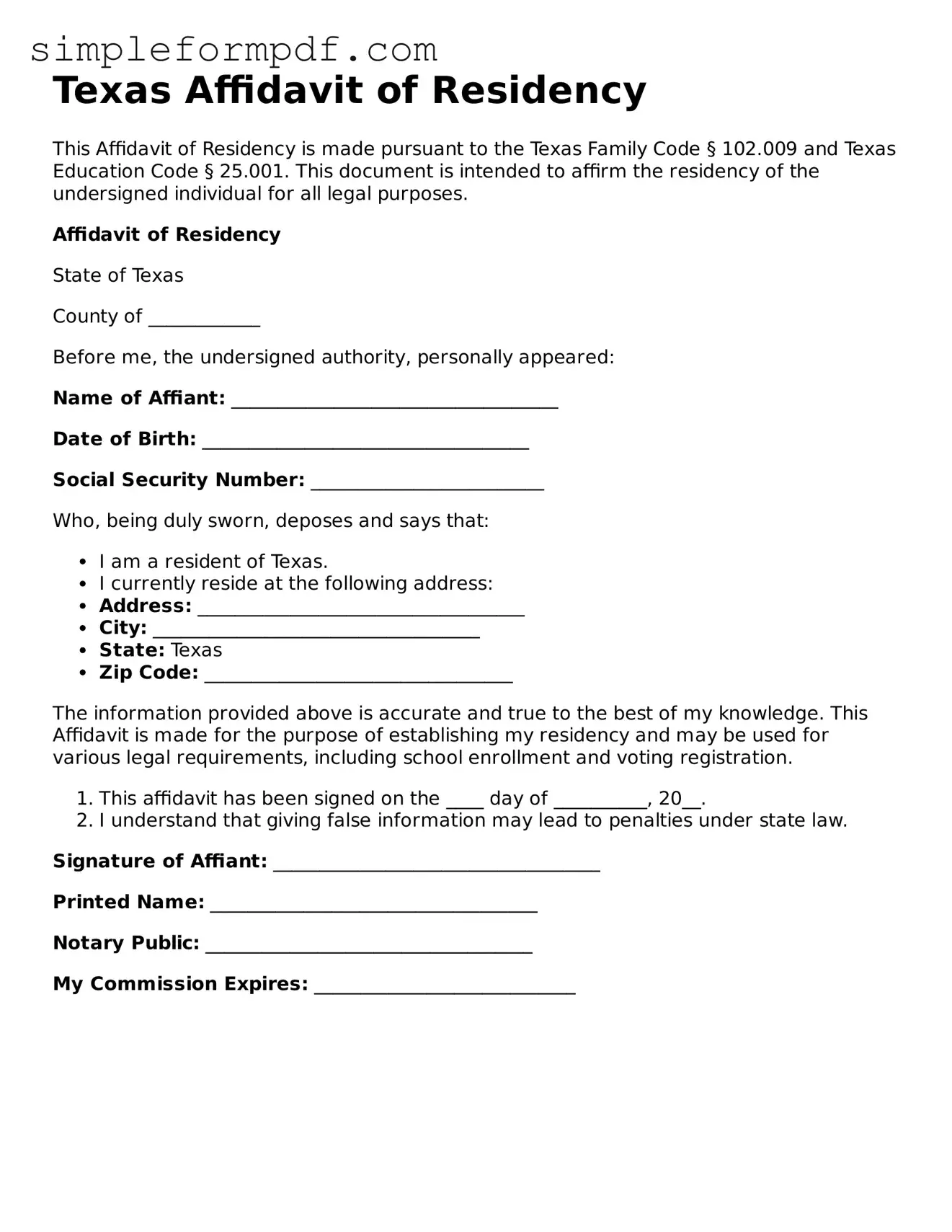Texas Affidavit of Residency
This Affidavit of Residency is made pursuant to the Texas Family Code § 102.009 and Texas Education Code § 25.001. This document is intended to affirm the residency of the undersigned individual for all legal purposes.
Affidavit of Residency
State of Texas
County of ____________
Before me, the undersigned authority, personally appeared:
Name of Affiant: ___________________________________
Date of Birth: ___________________________________
Social Security Number: _________________________
Who, being duly sworn, deposes and says that:
- I am a resident of Texas.
- I currently reside at the following address:
- Address: ___________________________________
- City: ___________________________________
- State: Texas
- Zip Code: _________________________________
The information provided above is accurate and true to the best of my knowledge. This Affidavit is made for the purpose of establishing my residency and may be used for various legal requirements, including school enrollment and voting registration.
- This affidavit has been signed on the ____ day of __________, 20__.
- I understand that giving false information may lead to penalties under state law.
Signature of Affiant: ___________________________________
Printed Name: ___________________________________
Notary Public: ___________________________________
My Commission Expires: ____________________________
